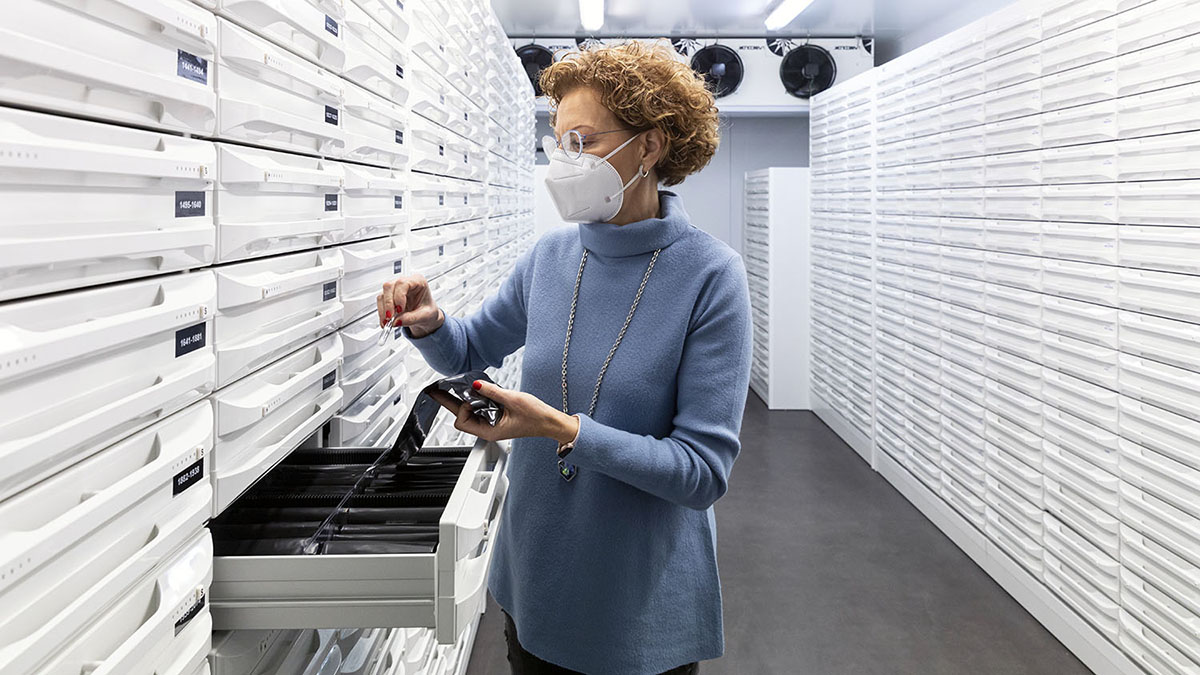The director of the CECT, Rosa Aznar
The European Microbial Resource Research Infrastructure (MIRRI), aimed at facilitating the access and legal use of microbial strains for R & D & I, has just obtained Landmark status after the evaluation of the European Strategic Forum on Research Infrastructures (ESFRI). Based in the University of Valencia, one of the main driving institutions, MIRRI is thus established as a reference element for the competitiveness of the European Research Area.
Microbial resources are the essential raw material for the advancement of biotechnology and knowledge, both in health and in agriculture, food technology or life sciences in general.
MIRRI is a European-funded research infrastructure that brings together Europe’s leading microbial resource centres and brings together more than 50 scientific institutions from 11 countries. It facilitates access to quality microbial resources, information on these and associated services, ensuring compliance with laws, codes of ethics and biosafety. It has its statutory headquarters at the Universitate do Minho (Braga, Portugal), and its computer and telematics headquarters at the University of Valencia through the Spanish Type Culture Collection (CECT), one of the two Spanish collections with category of Microbial Resource Centre and a unique service of the University of Valencia. Located in the Science Park of the academic institution, the CECT is the only official public collection in the state that houses bacteria, archaea, filamentous fungi and yeast.
ESFRI’s Landmark status – with which MIRRI has just been recognised – can be acquired by infrastructures that have reached an advanced stage of implementation in the framework of the European roadmap and that play a key role in the competitiveness of the European Research Area. “The years 2020 and 2021 have been decisive for the growth of MIRRI”, says biologist Luis Soares, executive director of this pan-European infrastructure. These are advances related to research and innovation strategy, the management model, accessibility to user communities, collaboration with the environment, internationalisation or training and communication actions. “We are now working on long-term strategic planning, as a fully operational and sustainable research infrastructure”, adds Soares.
“The next step we hope will take place in 2022 is to obtain the status of European Research Infrastructure Consortium (ERIC)”, explains Rosa Aznar, Professor of Microbiology at the University of Valencia, Director of the CECT and representative of Spain in MIRRI.
MIRRI fue incluida en la hoja de ruta de ESFRI en 2010, la fase preparatoria se financió con el proyecto EU MIRRI entre 2012 y 2016 y actualmente se encuentra en fase de implementación apoyada por el proyecto EU IS_MIRRI21 entre 2020-2023. La CECT tiene un papel destacado en ambos proyectos, ya que la Universitat de València es la sede del nodo español de MIRRI y es la propia Rosa Aznar quien preside el Foro de Coordinadores Nacionales de MIRRI. “Desde la CECT hemos liderado la elaboración, junto con colegas europeos de otras colecciones de cultivos, de los documentos necesarios para el proceso de evaluación de ESFRI que ha llevado a demostrar el nivel de madurez de MIRRI hasta conseguir el estatus de Landmark, prosigue la responsable de la CECT. “Formar parte de una ESFRI amplía las posibilidades de participación de nuestra universidad en Horizonte Europa, el nuevo programa marco de investigación e innovación de la Unión Europea, y sitúa a la CECT en una posición destacada entre las principales colecciones de cultivos europeas”, concluye Rosa Aznar. MIRRI was included in the ESFRI roadmap in 2010, the preparatory phase was funded by the EU MIRRI project between 2012 and 2016 and is currently in the implementation phase supported by the EU IS_MIRRI21 project between 2020-2023. The CECT has a prominent role in both projects, as the University of Valencia is the headquarters of the Spanish node of MIRRI and it is Rosa Aznar herself who chairs the Forum of National Coordinators of MIRRI. “From the CECT we have led the elaboration, together with European colleagues from other culture collections, of the necessary documents for the ESFRI evaluation process which has led to the demonstration of the level of maturity of MIRRI until achieving the status of Landmark, continues the person in charge of the CECT. “Being part of an ESFRI expands the possibilities for our university to participate in Horizon Europe, the new framework program for research and innovation of the European Union, and places the CECT in a prominent position among the main European culture collections”, concludes Rosa Aznar.


